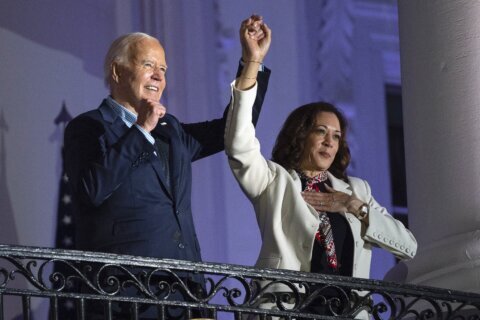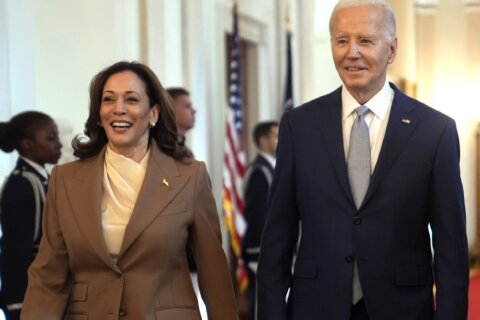Investors looking to diversify their portfolios often look toward the horizon of the U.S. stock market, particularly the S&P 500, which has seen a strong trailing year of outperformance.
This success has been largely driven by a small group of mega-cap technology and communication sector stocks. However, this impressive performance by the S&P 500 wasn’t unmatched on the global stage.
A surprising dark horse emerged from Japan, where the benchmark Nikkei 225 Index strongly outpaced the S&P 500 over the trailing year from Feb. 9, 2023, to Feb. 9, 2024, surging 34.5% in price compared to the S&P 500’s 22.9% return.
By doing so, the Nikkei 225 Index managed to finally overcome a multi-decade prolonged period of stagnation that began in December 1989. This remarkable turnaround highlights the potential that lies beyond the U.S. market.
However, the significance of this performance extends beyond mere numbers. It underscores a critical lesson for investors: A strict focus on U.S.-based assets might lead to missed opportunities.
“The ex-U.S. market makes up about 40% to 45% of the world’s market capitalization, so by ignoring international stocks, investors are missing out on roughly half the world’s investing opportunities,” says Kirk Kinder, founder and president of Picket Fence Financial. “Moreover, international stocks are substantially undervalued when you look at metrics like price-to-earnings and price-to-book ratios.”
The global market is ripe with potential, from developed nations like Germany, France and Switzerland, to emerging markets such as Brazil, India and China. These regions offer a combination of diversification and the possibility of substantial returns.
[Sign up for stock news with our Invested newsletter.]
“Adding international stocks to your portfolio can dampen volatility and improve returns, since the U.S. economy and market may face challenges at different times compared to international regions,” says Scott Klimo, chief investment officer at Saturna Capital. “Mitigating currency risk also plays a role, as the U.S. dollar may strengthen or weaken versus other countries at different times.”
For investors looking to expand their investment horizons without the complications of currency exchange or navigating the nuances of American depositary receipts (ADRs), exchange-traded funds (ETFs) and mutual funds present an efficient and accessible solution.
These investment vehicles offer transparency, liquidity and diversification through a single ticker symbol. They also provide investors with a broad spectrum of choices, from funds focusing on individual countries to those targeting specific sectors within a country.
Here are seven of the best international stock funds to buy in 2024:
| Fund | Expense Ratio |
| Vanguard Total International Stock ETF (ticker: VXUS) | 0.07% |
| iShares Core MSCI EAFE ETF (IEFA) | 0.07% |
| iShares Core MSCI Emerging Markets ETF (IEMG) | 0.09% |
| Franklin FTSE Japan ETF (FJPN) | 0.09% |
| KraneShares CSI China Internet ETF (KWEB) | 0.69% |
| Dimensional International Small Cap Value Portfolio (DISVX) | 0.44% |
| Fidelity Zero International Index Fund (FZILX) | 0% |
Vanguard Total International Stock ETF (VXUS)
One of the most diversified and inexpensive ways to access international equities is via a broad market index ETF like VXUS. This ETF passively tracks the FTSE Global All Cap ex U.S. Index, which currently consists of more than 8,500 market-cap-weighted equities from both developed and emerging- market countries. It charges a low 0.07% expense ratio and trades at around $57 per share.
Weighting holdings according to market capitalization currently results in overweighting European and Pacific market equities at around 40% and 27%, respectively. Emerging markets are allocated around 25%, and there is a small 7% allocation to North American equities thanks to the inclusion of the Canadian market.
iShares Core MSCI EAFE ETF (IEFA)
Investors looking to focus solely on international developed equities can do so via IEFA, which tracks the MSCI EAFE IMI Index. For this index, “EAFE” stands for “Europe, Australasia and the Far East” and “IMI” stands for “investable market index,” meaning it also covers small- and mid-cap stocks in addition to large-cap stocks. The ETF charges a 0.07% expense ratio.
U.S. investors may be familiar with some of the companies represented in IEFA’s top holdings, many of which have substantial operations and brand awareness in North America. Notable names include Nestle SA (NESN.SW), LVMH (MC.PA), Toyota Motor Corp. (7203.T) and Shell PLC (SHEL). IEFA is very popular, having attracted more than $107 billion in assets under management, or AUM.
iShares Core MSCI Emerging Markets ETF (IEMG)
The counterpart to IEFA is IEMG, which tracks the MSCI Emerging Markets IMI Net Index. This ETF is dominated by equities from countries like China, India, Taiwan, South Korea, Brazil, Saudi Arabia, South Africa, Mexico and more, which are in the process of rapid industrialization and commerce growth. It is a fairly high-risk and volatile ETF, with a three-year standard deviation of 17.5% at present.
In recent years, emerging market ETFs like IEMG have lagged their U.S. and developed market counterparts significantly. Over the trailing 10 years to Dec. 31, 2023, IEMG has only returned an annualized 2.9% with dividends reinvested. However, the ETF’s valuation metrics are looking fairly low, with a 12.7 price-to-earnings ratio and a 1.76 price-to-book ratio.
[SEE: 7 Best Vanguard Funds to Buy and Hold]
Franklin FTSE Japan ETF (FJPN)
The Japanese stock market is home to numerous notable automotive, consumer electronic and industrial companies with substantial U.S. presence. Investors looking to bet on continued Japanese market momentum can use a country-specific ETF like FJPN, which tracks the FTSE Japan Capped Index. This ETF manages to achieve a fairly low 0.09% expense ratio thanks to its passive indexing strategy.
FJPN currently consists of just over 500 market-cap-weighted Japanese equities. Its index is “capped,” meaning that there is a hard ceiling on how much weight an individual stock can be assigned. This limits concentration risk by ensuring that no single stock can exceed more than 20% of the index’s total weight. FJPN is also very liquid, with a 30-day median bid-ask spread of just 0.03%.
KraneShares CSI China Internet ETF (KWEB)
Investors looking for even more specific single-country exposure can drill down farther to invest in single sectors. For example, one of the most popular Chinese equity funds, KWEB focuses strictly on Chinese internet technology companies like Tencent Holdings Ltd. (0700.HK), Alibaba Group Holdings Ltd. (9988.HK) and Baidu Inc. (9888.HK) via the CSI Overseas China Internet Index.
“The valuation disparity between U.S. and Chinese internet companies has reached ‘extreme’ levels,” says Brendan Ahern, chief investment officer at KraneShares. “One could purchase all 31 companies in KWEB with the market cap of either Amazon.com Inc. (AMZN) or Alphabet Inc. (GOOG, GOOGL) and still have $140 billion-plus left over,” Ahern says. KWEB charges a 0.69% expense ratio.
Dimensional International Small Cap Value Portfolio (DISVX)
Market-cap-weighted international equity funds allocate proportionally higher weights to larger equities. This approach provides low costs and efficiency but can lead to concentration risk if a handful of companies grow to dominate the index. An alternative approach is to target specific factors, which are empirically proven drivers of long-term equity returns that can potentially lead to outperformance.
A great example is DISVX, which targets international small-cap value stocks with robust profitability. “Looking at average annualized returns going back decades, small-cap stocks have beaten large caps, value has outperformed growth and high-profitability stocks have out-gained low profitability stocks,” says Mary Phillips, deputy head of portfolio management, North America, at Dimensional Fund Advisors.
Fidelity Zero International Index Fund (FZILX)
Investing internationally doesn’t have to mean higher expense ratios. Budget-conscious investors on Fidelity’s brokerage platform can access FZILX, which tracks the firm’s proprietary Fidelity Global ex U.S. Index. This mutual fund is free to invest in for Fidelity users thanks to having no expense ratio, no minimum initial investment requirement, and no transaction fees or sales loads.
The index tracked by FZILX provides broad diversification across more than 2,200 stocks from both developed and emerging markets at approximately 75% and 25%, respectively. Over the trailing five years, this fund has returned an annualized 5.6% with dividends reinvested. It is a fairly new fund, having debuted in August 2018, so a longer performance history is still unavailable at this time.
More from U.S. News
7 Best Monthly Dividend Stocks to Buy Now
ETF vs. Index Fund: The Difference and Which to Use
7 Dividend Stocks to Buy and Hold Forever
7 Best International Stock Funds to Buy originally appeared on usnews.com
Update 02/13/24: This story was previously published at an earlier date and has been updated with new information.







